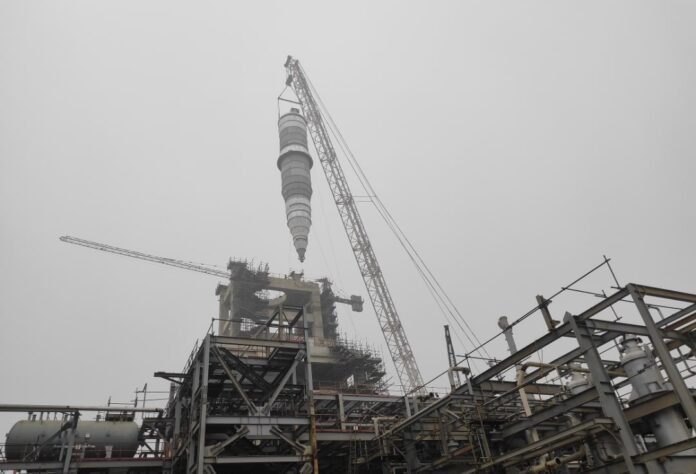When you look up at a construction site, you may notice tower cranes towering over the landscape. These impressive machines play a crucial role in the construction industry, enabling the efficient movement of heavy materials and equipment. One interesting feature of tower cranes is that their booms are often left to spin freely in the wind. In this article, we will explore why this is the case and answer some frequently asked questions about tower crane booms.
Contents
Why are tower crane booms left to spin freely?
Tower crane booms are designed to be left to spin freely in the wind for several reasons:
- Wind Load Distribution: Allowing the boom to spin helps distribute the wind load evenly across the structure, reducing the stress on the crane and enhancing its stability. The spinning motion allows the crane to adapt to changing wind directions and speeds, preventing excessive strain on any particular part of the structure.
- Preventing Wind-Induced Vibrations: When a tower crane is fixed in one position without the ability to rotate, it becomes more susceptible to wind-induced vibrations. Allowing the boom to spin reduces the risk of these vibrations, which can cause structural damage and compromise the crane’s stability.
- By allowing the boom to rotate, the crane can adjust to these changes and maintain its stability.
Frequently Asked Questions about Tower Crane Booms
1. How does a tower crane boom rotate?
A tower crane boom rotates due to the force exerted by the wind. The crane’s design allows the boom to pivot around its central axis, enabling it to move freely in response to wind pressure. The rotation is not powered by motors or any external force; it is solely the result of wind action.
2. Are there any safety measures in place when the boom rotates?
Yes, there are safety measures in place to ensure the smooth rotation of the tower crane boom. The crane is equipped with a slew brake, which allows the operator to control the rotation speed or stop it completely if necessary. Additionally, the crane’s design and engineering take into account factors such as wind load calculations and structural stability to ensure safe operation.
3. Can the rotation of the boom affect the crane’s lifting capacity?
No, the rotation of the boom does not directly affect the crane’s lifting capacity. The crane’s lifting capacity is determined by factors such as the length of the boom, the counterweight, and the strength of the crane’s structure. The spinning motion of the boom is designed to distribute wind loads evenly and maintain the crane’s stability, without impacting its lifting capabilities.
4. Are there any limitations to the rotation of the boom?
While tower crane booms are designed to rotate freely, there are some limitations in place. The rotation is typically limited to a certain range to prevent the boom from colliding with other structures or obstacles. The crane operator monitors and controls the rotation to ensure it stays within the safe range and does not pose any risks to the construction site or nearby areas.
5. What happens if the wind speed exceeds the crane’s limits?
If the wind speed exceeds the safe operating limits of a tower crane, the crane operator will take appropriate action to ensure the safety of the crane and its surroundings. This may involve stopping crane operations, securing the boom in a fixed position, or even temporarily shutting down the crane until the wind conditions improve.
In conclusion, tower crane booms are left to spin freely in the wind to distribute wind load, monitor wind conditions, and prevent wind-induced vibrations. This design feature enhances the stability and safety of tower cranes during construction projects.





